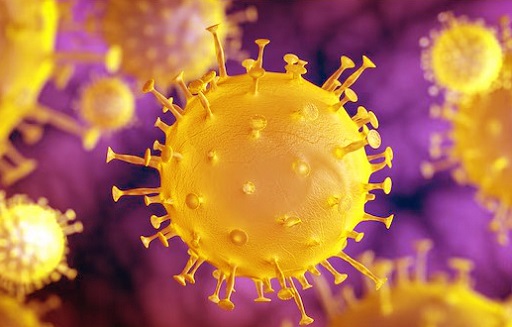Nikhil Prasad Fact checked by:Thailand Medical News Team Nov 25, 2024 4 months, 2 weeks, 4 days, 13 hours, 13 minutes ago
Medical News: Researchers from the Department of Veterinary Pathobiology, College of Veterinary Medicine, Oklahoma State University-USA, have made strides in understanding why some RNA viruses trigger excessive inflammation and weaken antiviral defenses. This imbalance, often seen in severe viral infections like SARS-CoV-2 and influenza, is referred to as "dysregulated immunity." Using advanced models that mimic viral RNA activity, this study unpacks the complex mechanisms of immune response disruption caused by single-stranded RNA (ssRNA) and double-stranded RNA (dsRNA).
 How Viral RNA Triggers Immune Overdrive and Suppressed Antiviral Defenses
Key Drivers of Dysregulated Immunity
How Viral RNA Triggers Immune Overdrive and Suppressed Antiviral Defenses
Key Drivers of Dysregulated Immunity
RNA viruses, including coronaviruses and influenza, are notorious for their ability to incite severe immune responses. When they infect cells, their genetic material - ssRNA and dsRNA - acts as a signal to immune cells, particularly macrophages, to trigger inflammation and antiviral defenses.
This
Medical News report explains that while dsRNA tends to strengthen interferon responses, crucial for fighting off viral infections, ssRNA has the opposite effect. ssRNA primarily activates Toll-like receptor 7 (TLR7), leading to heightened inflammation but minimal antiviral action. By contrast, dsRNA activates Toll-like receptor 3 (TLR3), promoting antiviral responses more robustly. These findings shed light on why ssRNA viruses, like SARS-CoV-2, are often associated with severe disease outcomes.
The Study’s Approach: Mimicking Viral RNA Behavior
To understand these mechanisms, researchers treated murine bone marrow-derived macrophages with synthetic RNA mimics - R848 for ssRNA (TLR7 agonist) and Poly I:C for dsRNA (TLR3 agonist). This allowed them to observe how these RNAs influence immune responses.
Key findings include:
-Inflammation vs. Antiviral Response:
ssRNA triggers excessive production of inflammatory molecules like TNF-α and IL-6.
dsRNA elicits a stronger interferon response, vital for curbing viral replication.
-Receptor Expression:
Macrophages showed significantly higher levels of TLR7 than TLR3, which may explain the amplified inflammatory response to ssRNA.
-Signaling Pathways:
TLR7 activation prompted early and intense activation of inflammatory signaling pathways, particularly NF-kB and MAPKs like ERK1/2, within minutes of exposure.
TLR3 activation led to delayed but stronger interferon-stimulated gene (ISG) responses.
Blocking Inflammation and Boosting Antiviral Defenses
The study further explored how targeting specific pathways could modulate the immune response:
-Inhibition of ERK1/2: Blocking this pathway reduced inflammation and enhanced interferon production. This suggests ERK1/2 as a potential the
rapeutic target to mitigate immune overdrive while boosting antiviral defenses.
-NF-kB and MAPK Pathways: Inhibiting these pathways also curbed inflammatory cytokine production, though the effects on interferon responses varied.
Interestingly, when p38-MAPK was inhibited, inflammatory cytokines unexpectedly increased under certain conditions. This highlights the complexity of immune signaling and underscores the need for targeted interventions.
Broader Implications for RNA Virus Management
These findings are especially relevant for conditions like severe COVID-19 or influenza, where immune dysregulation can worsen outcomes. The study suggests that therapies focusing on blocking ERK1/2 and other pathways could provide dual benefits: reducing harmful inflammation while bolstering antiviral responses.
Moreover, the differential roles of TLR7 and TLR3 offer insights into designing better vaccines and treatments for RNA virus infections. For instance, targeting TLR3-related pathways may amplify interferon responses, helping the body fight off infections more effectively.
Conclusion
The study highlights the critical role of viral ssRNA in driving immune dysregulation, marked by excessive inflammation and poor antiviral defenses. It identifies TLR7's high expression and its downstream signaling pathways, particularly ERK1/2, as key contributors. Therapeutically, inhibiting ERK1/2 while preserving interferon responses could represent a breakthrough in managing severe RNA virus infections. Future research should delve into how these findings translate across different immune cell types and viral infections.
By providing a detailed roadmap of how ssRNA and dsRNA influence immune responses, this study paves the way for innovative approaches to mitigate viral-induced immune dysregulation.
The study findings were published in the peer-reviewed journal: Pathogens.
https://www.mdpi.com/2076-0817/13/12/1033
For the latest on RNA Viruses, keep on logging to Thailand
Medical News.
Read Also:
https://www.thailandmedical.news/news/sars-cov-2-e-protein-induces-long-term-immune-dysfunction
https://www.thailandmedical.news/news/canadian-study-find-that-persistent-immune-dysfunction-as-being-behind-lethality-in-both-covid-19-and-non-covid-19-sepsis
